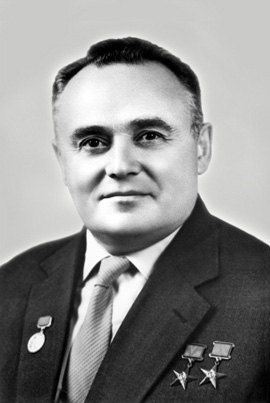Sergei Korolev
 Sergei Pavlovich Korolev (1907-1966) was an outstanding Soviet scientist and engineer in the field of rocketry and astronautics. He is considered the chief designer of the first Soviet satellites and spacecraft. Korolev was born on January 12, 1907, in Zhytomyr, Russian Empire (now Ukraine). He showed an interest in aviation and rocketry at an early age and later enrolled in the Department of Heat Engineering at the Kiev Polytechnic Institute.
Sergei Pavlovich Korolev (1907-1966) was an outstanding Soviet scientist and engineer in the field of rocketry and astronautics. He is considered the chief designer of the first Soviet satellites and spacecraft. Korolev was born on January 12, 1907, in Zhytomyr, Russian Empire (now Ukraine). He showed an interest in aviation and rocketry at an early age and later enrolled in the Department of Heat Engineering at the Kiev Polytechnic Institute.
In the 1930s, Korolev became one of the leaders of the Group for the Study of Reactive Motion, where he was involved in the development and testing of rocket engines. During World War II, he led the work on the creation of rockets used for bombardment. After the war, Korolev headed a secret rocket and space laboratory, where he developed rockets for space exploration. Under his leadership, the first artificial satellite of the Earth, Sputnik-1, was launched in 1957, which was a tremendous achievement and attracted worldwide attention. Under Korolev's guidance, the Soviet Union achieved significant successes in its space program, including the launch of the first human into space—Yuri Gagarin in 1961. He also led the development of the first automatic spacecraft, Luna-2, which became the first human-made object to reach the surface of the Moon. Despite his outstanding achievements, Sergei Korolev's name was a closely guarded state secret in the Soviet Union for a long time. He was known to the general public only by the pseudonym "Chief Designer" or "Uncle Sasha."
Unfortunately, Sergei Korolev passed away on January 14, 1966, never living to see the moment when Soviet cosmonauts landed on the
Moon.